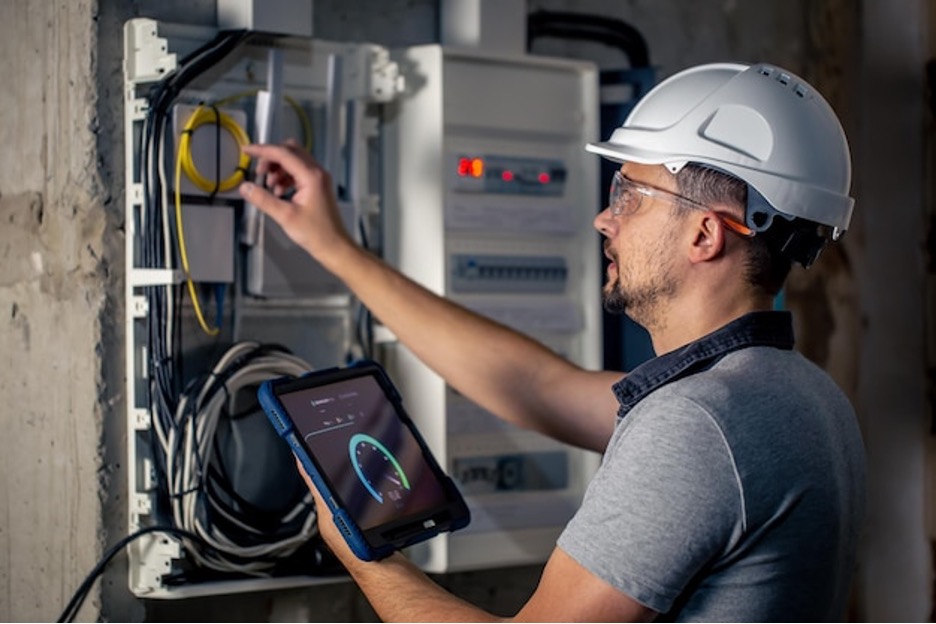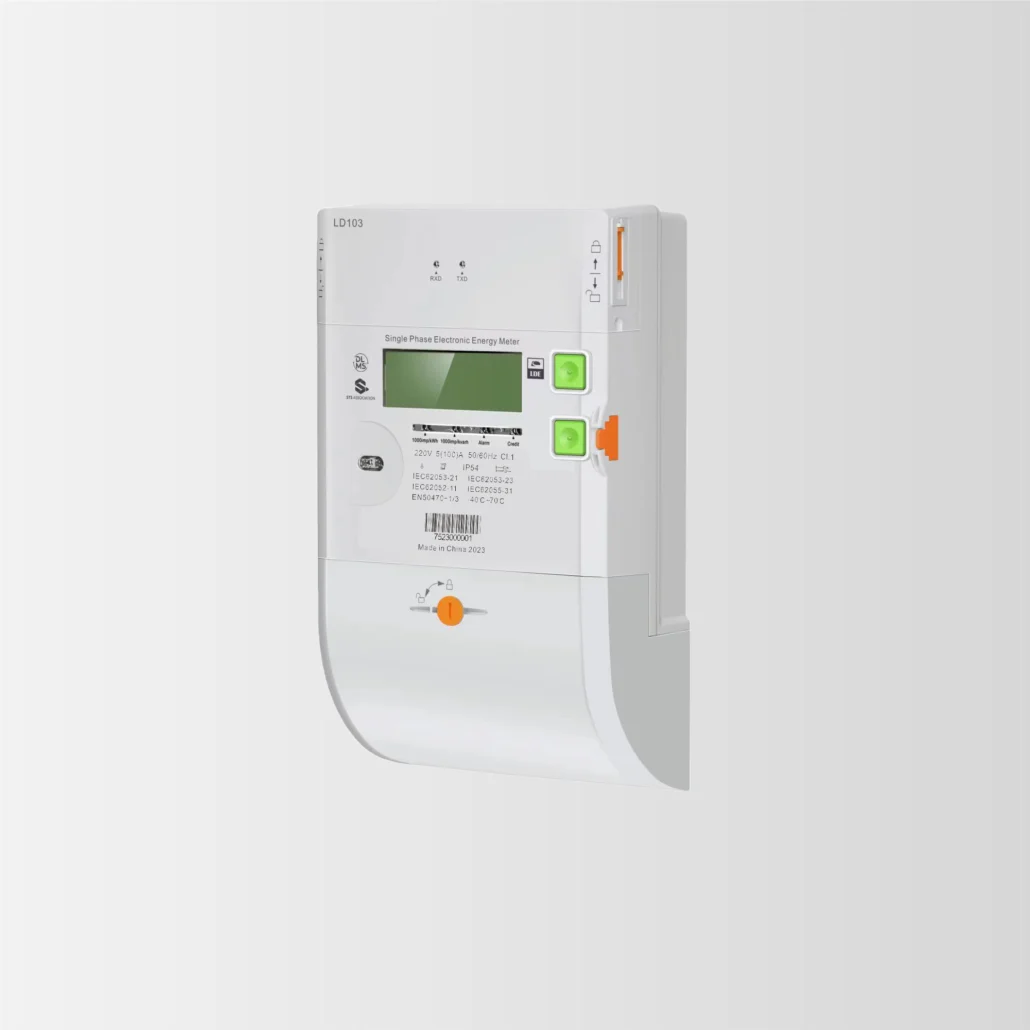Having a 24/7 continuous electric supply is like a full-time windmill working to lighten up your house. Nonetheless, your electricity bill has a fixed number of calculated units every time. Have you ever wondered how? The answer lies in the electronic energy meter! With the infusion of energy generation with digitalization and intelligence in modern life, electronic energy meters have become a key role, diligently recording your energy flows and ensuring you’re billed just right.
However, not all energy meters are the same. There are two major types of electronic energy meters: the single-phase energy meter and the three-phase energy meter. What differs between them? And how do they control the grand composition of electricity distribution? Let’s find out together in this blog post!

(Copyright photo from: https://img.freepik.com/free-photo/man-electrical-technician-working-switchboard-with-fuses-uses-tablet_169016-24219.jpg?w=900&t=st=1706520177~exp=1706520777~hmac=e8692e851ea1cf9d23f2ed5f1819f398f6c895efdb30c2b63190f5807a18032f)
What is an Electronic Energy Meter?
As we briefly introduce above, an electronic energy meter is an electrical device built to calculate and record the electrical energy consumption of houses, buildings, and industries over time. This information then helps the utility companies to bill the users for their power usage.
-
How Does it Work?
The energy meter, also known as the watt-hour meter, works on a DC-AC voltage shifting principle. The device has inbuilt electrical circuits and components. By using these circuits, the meter converts the analogue current and voltage signals into high-resolution digital signals using sigma-delta ADC (analogue-to-digital converter) to measure energy utilization.
Next, it calculates the product of voltage and current to get the power in watts. An electronic energy meter obtains the energy in kWh (kilowatt-hours), the unit of professional power consumption, by keeping track of power used over time.
-
Types of Energy Meter
There are many different types of electronic energy meters. You can find a range of energy meters, from traditional analogue to digital and smart meter categories. However, these meters also come with different phases concerning energy utilization and distribution.
The term “phase” here refers to a system’s electrical power distribution. In simple terms, it describes the number of conductors (wires) through which electric current flows. Energy meters are categorized into different phases based on the number of conductors they monitor. The two primary categories are single-phase and three-phase meters.
Comparison Between Single-Phase and 3-Phase Electronic Energy Meter
A single-phase and a 3-phase electronic energy meter vary greatly in efficiency and working capacity. However, there is much more to these meters than the energy consumption differences. Some of the features that set these meters apart from one another include:
-
Working Principle
As the name explains, a single-phase meter uses power from one conductor monitor where voltage and current are aligned in a simple waveform. On the other hand, the three-phase meter monitors three conductors where voltage and currents are united in a complex waveform, providing higher work efficiency.
-
Efficiency and Power Delivery
A single-phase meter with a simpler distribution system has less power coverage. However, a three-phase meter distributes power more evenly, enhancing efficiency and power delivery.
-
Wiring and Installation Complexity
Single-phase electronic energy meters have simpler wiring and installation, with only 2 wires. Alternatively, three-phase meters use more complex wiring, commonly involving 4 wires. The latter’s installation complexity increases due to the need to coordinate and balance three phases, making it more intricate than the straightforward setup of single-phase meters.
-
Applications
A single-phase meter has low power capacity, making it suitable for residential and small business applications handling lighter loads like lighting and domestic appliances. On the other hand, three-phase electronic energy meters are designed for C&I settings with a more distributed power demand.
Londian – A Smart Electronic Energy Meter Manufacturers

Above all, there are many differences between the single-phrase and three-phrase electronic energy meters. Before investing, you need to know them and choose one type of it according to your needs.
And if you want to select a smart meter manufacturer, we, Lodian, have made its mark. Our single-phrase and three-phrase electronic energy meters are built to meet all kinds of domestic and commercial demands, catering to every unique energy and power issue. In the chart below, there are the key features of our best electronic energy meters for each type: Longdian LD103 and LD302:
| Londian LD103 Single-Phase Meter | Londian LD302 Three-Phase Meter |
|
|
Conclusion

Established in 1996, we, Londian, have become a leading name in the power industry. With more than 2 decades of experience in manufacturing electronic energy meters, we have excelled in formulating high-end technology to meet all kinds of power demands. Moreover, international authorities like UKCA, KEMA, DLMS, G3, and IDIS certified our electronic energy meters, which can ensure your safety and quality. So, if you want to invest in trusted electric energy meters, try ours for the best experience!
